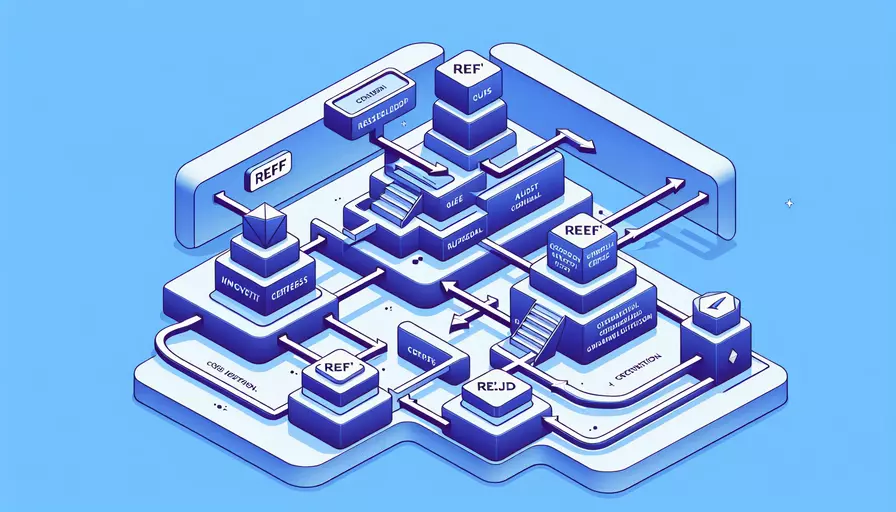
在Vue中,跨层级调用ref可以通过以下几种方式实现:1、通过provide和inject、2、通过事件总线、3、通过Vuex或Pinia。以下是通过provide和inject实现跨层级调用ref的详细描述。
1、通过provide和inject:在Vue 3中,provide和inject是一对用于跨层级传递数据的API。父组件使用provide提供数据,子组件使用inject接收数据。通过这种方式,可以在父组件中定义ref,并在任意层级的子组件中访问该ref。下面是具体的实现步骤:
一、PROVIDE和INJECT
- 父组件中定义ref并提供数据:
<template>
<div>
<ChildComponent />
</div>
</template>
<script>
import { ref, provide } from 'vue';
import ChildComponent from './ChildComponent.vue';
export default {
name: 'ParentComponent',
components: { ChildComponent },
setup() {
const myRef = ref(null);
provide('myRef', myRef);
return { myRef };
}
};
</script>
- 子组件中接收ref并使用:
<template>
<div>
<button @click="focusInput">Focus Input</button>
</div>
</template>
<script>
import { inject } from 'vue';
export default {
name: 'ChildComponent',
setup() {
const myRef = inject('myRef');
const focusInput = () => {
if (myRef.value) {
myRef.value.focus();
}
};
return { focusInput };
}
};
</script>
在这个例子中,父组件通过provide提供了一个ref给子组件。子组件通过inject接收该ref,并在需要时使用它来操作DOM元素。
二、事件总线
事件总线是一种常见的跨组件通信方式,尤其适用于兄弟组件间的通信。通过创建一个事件总线,可以在一个组件中触发事件,并在另一个组件中监听该事件,从而实现数据传递。
- 创建事件总线:
// eventBus.js
import { ref } from 'vue';
export const eventBus = ref({});
- 父组件中触发事件:
<template>
<div>
<ChildComponent />
</div>
</template>
<script>
import { ref } from 'vue';
import { eventBus } from './eventBus';
import ChildComponent from './ChildComponent.vue';
export default {
name: 'ParentComponent',
components: { ChildComponent },
setup() {
const myRef = ref(null);
eventBus.value.myRef = myRef;
return { myRef };
}
};
</script>
- 子组件中监听事件:
<template>
<div>
<button @click="focusInput">Focus Input</button>
</div>
</template>
<script>
import { eventBus } from './eventBus';
export default {
name: 'ChildComponent',
setup() {
const focusInput = () => {
if (eventBus.value.myRef && eventBus.value.myRef.value) {
eventBus.value.myRef.value.focus();
}
};
return { focusInput };
}
};
</script>
三、Vuex或Pinia
Vuex和Pinia是Vue的状态管理工具,可以用于管理跨组件和跨层级的数据。在使用Vuex或Pinia时,可以将ref存储在状态管理工具中,从而实现跨层级调用。
- 安装Vuex或Pinia:
npm install vuex
- 定义store:
// store.js
import { createStore } from 'vuex';
export const store = createStore({
state: {
myRef: null
},
mutations: {
setMyRef(state, ref) {
state.myRef = ref;
}
}
});
- 父组件中设置ref:
<template>
<div>
<ChildComponent />
</div>
</template>
<script>
import { ref } from 'vue';
import { useStore } from 'vuex';
import ChildComponent from './ChildComponent.vue';
export default {
name: 'ParentComponent',
components: { ChildComponent },
setup() {
const store = useStore();
const myRef = ref(null);
store.commit('setMyRef', myRef);
return { myRef };
}
};
</script>
- 子组件中使用ref:
<template>
<div>
<button @click="focusInput">Focus Input</button>
</div>
</template>
<script>
import { useStore } from 'vuex';
export default {
name: 'ChildComponent',
setup() {
const store = useStore();
const focusInput = () => {
if (store.state.myRef && store.state.myRef.value) {
store.state.myRef.value.focus();
}
};
return { focusInput };
}
};
</script>
通过以上三种方法,可以实现Vue中ref的跨层级调用。每种方法都有其适用的场景和优缺点,开发者可以根据具体需求选择合适的方案。
总结来看,跨层级调用ref在Vue中可以通过provide和inject、事件总线以及Vuex或Pinia等多种方式实现。每种方式都有其独特的优势和应用场景,开发者可以根据具体需求选择最合适的方式。建议在实际项目中,根据组件的层级关系、数据传递的频率和复杂度等因素,选择合适的方法来实现跨层级调用ref,以提高开发效率和代码的可维护性。
相关问答FAQs:
Q: 在Vue中,如何跨层级调用ref?
A: Vue中的ref属性可以用于获取组件或DOM元素的引用,方便我们在代码中操作它们。在某些情况下,我们可能需要在不同层级的组件中调用ref,下面是几种实现的方式:
- 使用$refs对象:每个Vue组件实例都有一个$refs属性,它是一个对象,包含了所有有ref属性的子组件或DOM元素。我们可以通过访问$refs对象来调用跨层级的ref。
<template>
<div>
<child-component ref="childRef"></child-component>
</div>
</template>
<script>
export default {
mounted() {
const childRef = this.$refs.childRef;
childRef.doSomething();
}
}
</script>
- 使用事件:我们可以在子组件中定义一个事件,并在父组件中监听该事件来调用子组件的ref。
<!-- ChildComponent.vue -->
<template>
<div>
<button @click="doSomething">Click me</button>
</div>
</template>
<script>
export default {
methods: {
doSomething() {
this.$emit('do-something');
}
}
}
</script>
<!-- ParentComponent.vue -->
<template>
<div>
<child-component @do-something="handleDoSomething"></child-component>
</div>
</template>
<script>
export default {
methods: {
handleDoSomething() {
const childRef = this.$refs.childRef;
childRef.doSomething();
}
}
}
</script>
- 使用provide/inject:provide和inject是Vue中的高级选项,可以用于跨层级传递数据。我们可以在父组件中使用provide提供ref的引用,在子组件中使用inject获取ref的引用。
<!-- ParentComponent.vue -->
<template>
<div>
<child-component></child-component>
</div>
</template>
<script>
export default {
provide: {
childRef: null
},
mounted() {
this.childRef = this.$refs.childRef;
}
}
</script>
<!-- ChildComponent.vue -->
<template>
<div>
<button @click="doSomething">Click me</button>
</div>
</template>
<script>
export default {
inject: ['childRef'],
methods: {
doSomething() {
this.childRef.doSomething();
}
}
}
</script>
以上是几种在Vue中跨层级调用ref的方式。根据具体的需求,我们可以选择适合的方式来实现。无论哪种方式,都能够让我们方便地在不同层级的组件中调用ref,实现灵活的交互。
文章标题:vue中ref如何跨层级调用,发布者:不及物动词,转载请注明出处:https://worktile.com/kb/p/3680599

 微信扫一扫
微信扫一扫  支付宝扫一扫
支付宝扫一扫 